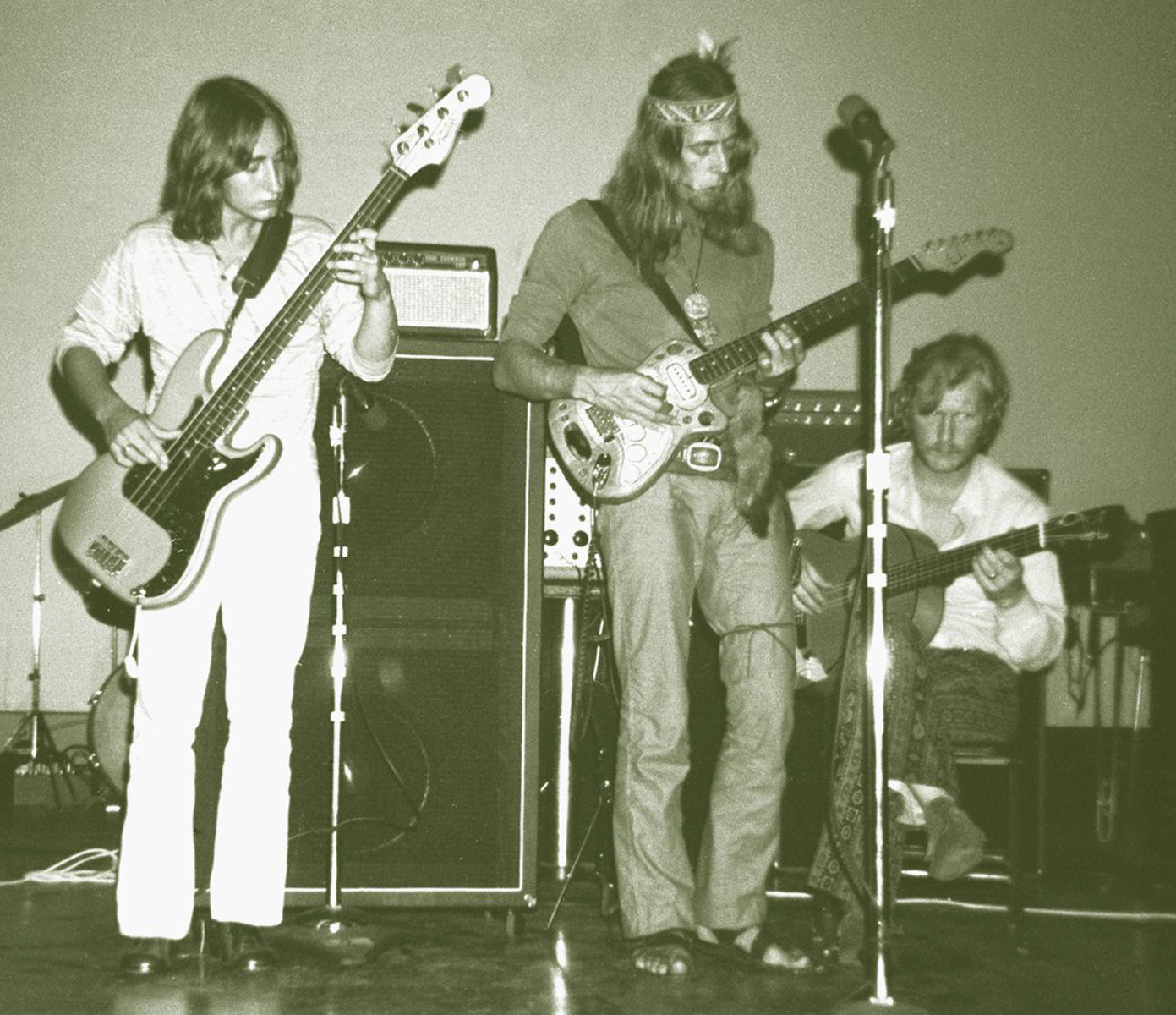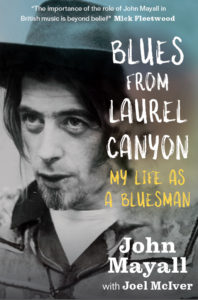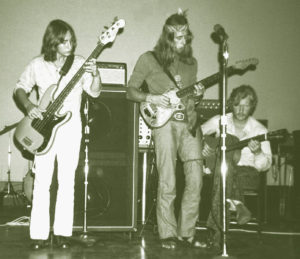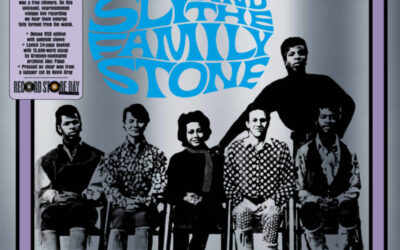Blues From Laurel Canyon: John Mayall: My Life as a Bluesman Just Published
BY HARVEY KUBERNIK © 2019
John Mayall OBE has been indefatigable in his commitment to the blues: virtually every musician who went through his “Bluesbreakers” academy went beyond their wildest imaging. Eric Clapton, Peter Green, and Mick Taylor all began their careers under Mayall’s rigorous training.
On November 14th, Mayall’s autobiography, Blues From Laurel Canyon: John Mayall: My Life as a Bluesman, written with Joel McIver will be published by Omnibus Press.
For over 50 years, John Mayall has served as a pioneer of blues music, rightly earning him the title, “The Godfather of British Blues.” In 2015 he was inducted into the Blues Hall of Fame.
“The importance of the role of John Mayall in British music is beyond belief,” hailed Mick Fleetwood.
Joel McIver is a British author. The best-known of his books is the best-selling Justice For All: The Truth About Metallica, first published in 2004. McIver’s other works include biographies of Black Sabbath, Slayer, Ice Cube and Queens Of The Stone Age, all published by Omnibus Press.
John Mayall’s autobiography takes us into his blues-driven trek that combines the marshes of the deltas as well as the blooming hillsides of Laurel Canyon.
John’s tome, culled from years and years of journal diaries, describes the azure-blue California from the native gunmetal-gray England in 1968.
In a September 2019 interview, the eighty-five year old Mayall told me about his book and especially the influence of Laurel Canyon on his musical expedition.
“I had been writing all my memoirs privately for years and years. I did put it informally in a book form and fortunately one of the publishers picked up on it and the guy put it into some reasonable form. We finally got it into a position where people could read it. I think people will find a lot of truth about what happened in the British music scene and my whole life story before I got into music.
“The impact and influence of Laurel Canyon…It was one of those rare locales which was in the heart of Hollywood, yet if you just went up the hill into the Canyon you could get all the peace and quiet of country. So from your house you could look down on the whole of Los Angeles and it’s a unique locale. And that really appealed to a lot of musicians who moved there. It got all of the charm of the country but you are only down the hill from the heart of Hollywood.”
In my 2009 book, Canyon of Dreams: The Magic and the Music of Laurel Canyon, Mayall reminisced about his first visit to Hollywood and Laurel Canyon, and what we native Angelinos call “Gypsy Canyon.”
“As soon as I got there the temperature was seventy degrees, which was pretty rare for England in the summertime. ‘This is heaven.’ It was one of the main factors. I decided to move there in the summer of 1968. It was set in my mind to move there because I felt I belonged there more than in England. I mean, England was family and everything. Which can’t be repeated, but the main thing was the climate, and my whole life I’d been brought up on American culture through novels and particularly music. So it just felt right. That’s how it all began,” he volunteered.
“All the best of the peaceful country life. All you heard were birds and back to nature. It was only five minutes down the hill to the heart of Hollywood. It was quite a unique situation. If you are up in the Hollywood Hills and look down and see the whole metropolis laid out there before you. More than anything, it was the stark contrast of peace and quiet and the bustle of a major city.”
In our September phone conversation, I asked Mayall about blues and reflecting on Jimi Hendrix, who died nearly a half a century ago in September of 1970.
“Blues is something that people can relate to because the stories it tells and things that are common to all people. And that’s the reason why the blues was so popular in Europe. And people recognized that.
“Whereas in America it was colored by restrictions that kept black music separate from white music so I think when it’s all been combined in the early sixties. That was when people started to recognize what was on their own doorstep,” stressed John.
“Jimi and I loved the music of Freddy King. We both included his catalogue in our sets.” “The Stumble” was done on Mayall and the Bluesbreakers’s Hard Road and the King and Sonny Thompson composition “Driving Sideways” was covered on their Crusade album.
“Freddy King was a revelation to a lot of people who played guitar and the singing was quite incredible. When Jimi mentioned Freddy King we were all very well familiar with him in England. King’s Getting Ready is one of my favorite albums.
“When Freddy King came over to play in England in 1969 he was already in touch with a brand new audience for him. So I think that Jimi did a lot of ground work in mentioning him around and it all came together.”
On January 2, 1968 John Mayall jammed with Jimi Hendrix and Al Sykes in the Railway Hotel in West Hampstead, North West London around John’s gig at Klook’s Kleek. Mayall performed nearly three dozen shows at the club and did much to nurture and develop national interest in the blues.
John Lee Hooker, backed up by John Mayall, Little Walter, Sonny Boy Williamson, Muddy Waters, Howlin’ Wolf, T-Bone Walker, and Chuck Berry all toured England in the sixties. Sonny Boy Williamson once did some shows supported by the Moody Blues.
“Jimi came to England and a blues world which had been all my life, going back to Cyril Davies and Alexis Koerner who started the British Blues boom. This attracted a lot of musicians who now had something new to inspire them. Blues had an audience in Britain. And Chas Chandler of the Animals who sort of discovered Jimi not doing very well in the America and brought him over to England and that really positioned Jimi in an international scale.
“Jimi was very thrilled of course that people in Europe were blown away by his playing. He was really recognized for what he was. It was something he hadn’t experienced in America. English and European audiences really put him on the map,” Mayall reinforced.
“When Chas Chandler brought Jimi over to England everybody was totally impressed by his personality and his singing and his playing. I think it was a shot in the arm for all the British guitar players to have someone that they had never heard before. And it all started from there, really. It was important for Jimi to have had Chas Chandler who himself had reached great international regard with playing with the Animals.
“When I saw Jimi Hendrix play with his group you knew what he was doing was that music was the main thing and the way that he played and the theatrics were all part of the way he played. People didn’t really separate that from his body of work.
“I did a show in America with Jimi and Albert King in 1968 for Bill Graham at Winterland,” remembered Mayall. “Graham supported blues music and booked shows to have them with headliners. Bill was somebody who could really see the future of blues and rock and the first person in America to recognize that and put on these big shows at the Fillmores on the East and West Coast and Winterland venues where Jimi and I were on the calendar. So Graham was very important in really giving a professional take on how to present artists. I did The Turning Point, a live album in July 1969 at the Fillmore East.
“FM radio in America 1967-1972 programmed blues on the rock stations. There was an audience who had an understanding of the blues when you played for them. I was very excited that this music or the music influenced by the blues was becoming new to people.
“It was an exciting time and of course it did lead to me coming to America for the first time in January 1968. And we played the Whisky A Go-Go, Filmore in New York, Detroit, and San Francisco. That particular time in 1968 it was very apparent that America had a big taste for British groups and American groups were all part of the same picture. An exciting time.”
Mayall once did a recording session with the members of the Liverpool-based poetry group Scaffold, Mike McGear and Roger McGough for their 1968 McGough and McGear self-titled LP filled with poetry, humour and late sixties psychedelic rock.
Paul McCartney, McGear’s older brother, assisted in the production of the album, which featured well-known musicians guesting in the studio: Graham Nash, Dave Mason, Jimi Hendrix, John Mayall, Spencer Davis, Paul Samwell Smith of the Yardbirds, Viv Prince from the Pretty Things and Paul’s girlfriend, Jane Asher.
“Paul McCartney was in charge of it all. I knew Paul and he just had me come into the studio to do my bit. Jimi was there.”
Hendrix lends guitar to the tracks “So Much” and “Ex-Art Student.”
Mayall further ruminated about Laurel Canyon.
“The connection was getting there in the first place. It began with Frank Zappa. I met him in 1967 in Scandinavia, when he and the Mothers of Invention were playing there and we were in Copenhagen at the same time. So that’s where I met that crowd. ‘If you come to America, look me up.’ So I did.
“I stayed at Zappa’s cabin for the first part if my three week vacation. I never really left Hollywood and Laurel Canyon. It became the confirmation for me. That’s where I wanted to move eventually.”
On his epic Blues From Laurel Canyon album, Mayall penned a song about Zappa.
“The feeling when you listen to the song ‘2401’ is the vibe you hear. For me it was a very eccentric household, really. Frank and Gail Zappa, at the center, were the grounding factor there. The sanest people on the planet. I think Frank really encouraged that, and he kind of collected oddballs and information about America and its culture.
“And the other connection was with Canned Heat and Bob ‘The Bear’ Hite, who I also met when they toured Europe. There was a blues heritage in town. I saw Canned Heat at The Ash Grove. That’s where I first got to know Larry ‘The Mole’ Taylor and ‘The Bear.’ And I later recorded with Larry.”
Mayall also wrote “The Bear,” a tribute tune for Bob “The Bear” Hite, Canned Heat’s lead singer
“The Bear’s house was totally amazing. I stayed up there a couple of nights. Canned Heat had just hit the big time and Bob shared a house with their managers, Skip Taylor and John Hartman. It was a huge house and was divided into their own sections. Bob had the large living room, and the whole wall was lined with 78’s. He was the big deejay. ‘Listen to this one!’ He was the one person I didn’t have to educate about JB Lenoir. He had everybody covered.”
John Mayall’s ’67 Crusade LP houses an homage track to the American blues guitarist titled “The Death of J.B. Lenoir.” Mayall also re-did the song on his epic 1969 album The Turning Point.
While bunking in Laurel Canyon, Mayall lodged for a short time in the basement of John Judnich’s house, who was comedian/satirist Lenny Bruce’s right-hand man.
Judnich owned the well-regarded Tyco Brae sound company, which serviced the monumental 13 Shrine Exposition Hall Pinnacle dance concerts in downtown Los Angeles. Mayall also catalogued and notated rare Lenny Bruce tapes for Judnich.
Bruce died in August 1966 in his Hollywood Blvd. home. On Mayall’s The Turning Point album, a radio and turntable favorite was “Room to Move,” which referenced Bruce in his lyric.
“As for the Blues From Laurel Canyon album, It was an action-packed vacation,” he summarized.
“No problem going back home and putting it all together to record. ‘This happened. That’s a song.’ The stories lead right into each other and that’s the way I chose to actually construct the LP, by having it all in different keys. There were links that would change the key so it smoothly flowed one into each other.”
Mayall effectively chronicled the now crowded Sunset Blvd. in his civic anthem, ‘Walkin’ on Sunset.’
“There was a lot of walking traffic rather than cars,” he told me in Canyon of Dreams. “Cars were somebody else, but the heart of Hollywood was the people on the streets.”
The song also acknowledges the Whisky A Go-Go, and the loyal audiences who supported Mayall’s singular blues vision.
I recall John Mayall’s long-anticipated 1968 opening night at the famed club, with Buffalo Springfield members Neil Young and Stephen Stills pressed right up close to the stage to check out Mayall’s debut. I went to every set.
“The Whisky was a venue we played when we first came to America in 1968. Elmer Valentine, who owned the Whisky, in fact, lived up in Laurel Canyon on Grandview Drive where I eventually lived. He did some house-hunting for me; found two houses that were up for sale before they kind of went on the market. So he was the connection for me.
“When we got the first booking at the Whisky, we were set for three days, but because of the demand for tickets for the show, he extended it an extra week,” marveled John.
During 1969 I attended Mayall’s return to the Whisky when he promoted The Turning Point.
Poster artist and graphic designer Dennis Loren also caught the Mayall Turning Point lineup of musicians at the Fillmore West, the old Carousel Ballroom.
“I was fortunate to see Peter Green in Mayall’s Bluesbreakers group at the Fillmore Auditorium and the Mick Taylor version of the band at Winterland,” recalled Loren. “Not long after seeing the Taylor Bluesbreakers, I saw the original Peter Green’s Fleetwood Mac 4 piece. Prior to these concerts I had already seen Eric Clapton with Cream at least 3 times at the Fillmore Auditorium. Being an early fan of the Yardbirds, as well as a fan of Clapton’s guitar playing, led me directly to John Mayall’s music and history,” Dennis volunteered.
“It was great to see this version of the band, because this was such drastic change from horn driven Crusade line up. This version of the band was semi acoustic and featured acoustic guitarist Jon Mark. Mark Almond played keyboards and woodwind instruments. As I recall they had no drummer and the sound was driven by the very young bass player, whose name escapes me, John Mayall – of course – played guitar and harmonica. It was really great to see the band perform a song like ‘Room To Move’ live!!!
“Having an acoustic guitarist like Jon Mark in the band, was kind of like having a Bert Janch or John Renborn style guitarist, I had first seen Pentagle at the Fillmore West, around this same time. I recognized the influence of both folk and jazz music on both bands. John Mayall was definitely at the beginning of his Laurel Canyon days with this version of the group, with his sandals, headband, hippy necklace/pendant and very long hair – ha!!!.”
During 1964, Elmer Valentine and partners opened the Whisky a Go-Go on the Sunset Strip. Elmer later opened the Rainbow Bar & Grill with partners Lou Adler and Mario Maglieri, as well as the Roxy Theater with Adler.
In late January 2009, family members, friends and former employees of Elmer Valentine, who passed away at age 85 in December 2008, gathered on the landmark premises.
It was Valentine’s longtime friend and business partner Lou Adler along with his son Nic who organized a tribute to Valentine.
Lou asked me to secure some of the talent for the event. John Mayall was the first person to respond after I emailed him the request.
Johnny Rivers, Stephen Stills, Byrds co-founder Chris Hillman, and South African trumpeter Hugh Masekela paid their respects to Valentine on the legendary doing a slew of regional-birthed music.
John Mayall offered “Walkin’ on Sunset” to the very appreciative crowd.
(Harvey Kubernik is the author of 15 books, including titles on Leonard Cohen and Neil Young. His 2017 volume, the acclaimed 1967 A Complete Rock History of the Summer of Love was published by Sterling/Barnes and Noble. His Inside Cave Hollywood: The Harvey Kubernik Music InnerViews and InterViews Collection, Vol. 1 was published in December 2017, by Cave Hollywood. Kubernik’s The Doors Summer’s Gone was published by Other Cottage Industries in March 2018.
The Doors: Summer’s Gone has been nominated for the 2019 Association for Recorded Sound Collections Awards for Excellence in Historical Recorded Sound Research.
In November 2018, Sterling/Barnes and Noble published Harvey’s book, The Story of The Band From Pig Pink to The Last Waltz, written with his brother Kenneth Kubernik.
Harvey Kubernik’s 1995 interview, Berry Gordy: A Conversation With Mr. Motown is included in The Pop, Rock & Soul Reader edited by David Brackett published in 2019 by Oxford University Press.
This century Harvey penned the liner note booklets to the CD re-releases of Carole King’s Tapestry, Allen Ginsberg’s Kaddish, Elvis Presley The ’68 Comeback Special and The Ramones’ End of the Century.
During 2019, Harvey was a feature on-screen interview for director Matt O’Casey for his BBC4-TV digital arts channel Christine McVie, Fleetwood Mac’s Songbird. The cast includes Christine McVie, members of Fleetwood Mac, Christine’s family, Heart’s Nancy Wilson, and producer Richard Dashut. The program was broadcast on September 20 2019.
In May 2014, filmmaker Matt O’Casey lensed Kubernik in his BBC-TV documentary on singer Meat Loaf, titled Meat Loaf; In and Out of Hell, broadcast in the US market in 2016 on the Showtime Cable TV channel.
Kubernik was a featured talking head in O’Casey’s 2012 Queen at 40 documentary broadcast on BBC Television and released as a DVD Queen: Days Of Our Lives in 2014 via Eagle Rock Entertainment.
In 2013 Harvey Kubernik was interviewed for the 2013 BBC-TV documentary on Bobby Womack Across 110th Street, directed by James Meycock. Womack, Ronnie Wood of the Rolling Stones, Damon Albarn of Blur and the Gorillaz as well as actor Antonio Vargas are featured. https://nwfilm.org › United Kingdom.
In November 2006, Harvey Kubernik was a featured speaker discussing audiotape preservation and archiving at special hearings called by The Library of Congress and held in Hollywood, California.








